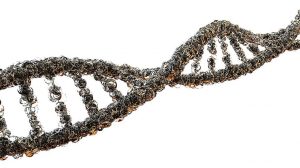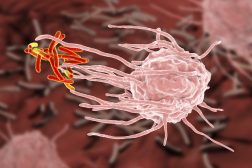Definition
noun, plural: somatotrophs
The hormone-secreting cell in the anterior pituitary that particularly releases (pituitary) growth hormone
Supplement
The pituitary gland is the master endocrine gland of the endocrine system. It is responsible for the production and the release of different hormones that regulate various physiological processes. The pituitary gland is comprised of the anterior and the posterior pituitaries bordered by pars intermedia. The anterior pituitary is the glandular portion and release hormones that regulate growth, reproduction, lactation, and stress. There are about five types of hormone-secreting cells in the anterior pituitary classified based on the hormones that they produce and secrete: (1) somatotrophs, (2) corticotrophs, (3) thyrotrophs, (4) gonadotrophs, and (5) lactotrophs.
Somatotrophs are the cells in the anterior pituitary that release pituitary growth hormone (also called somatotropin). They constitute about 30-40% of the anterior pituitary cells. They are stimulated to release pituitary growth hormone (GH) in response to somatocrinin (also called growth hormone releasing hormone, GHRH). Their GH secretion is inhibited by somatostatin (or growth hormone inhibiting hormone, GHIH). Both GHRH and GHIH are released by the hypothalamus via the secondary plexus and the vein of the hypophyseal portal system.
In humans, the pituitary growth hormone is referred to as human growth hormone (hGH) as opposed to the bovine somatotropin produced by bovine animals. Bovine somatotropin differs from human growth hormone in terms of structure. In cows, the bovine somatotropin is involved in the regulation of the amount of milk production.
hGH is a polypeptide made up of 191 amino acids encoded by the GH1 gene located at the growth hormone locus on chromosome 17. It is essentially involved in the promotion of growth especially in height during pubertal stage, growth of internal organs (except for the brain), protein synthesis, lipolysis, gluconeogenesis in liver, deiodination of thyroxin to triiodothyronine (active form of thyroid hormone), etc.
Word origin: Greek sōmat (“body”) + tropikós (“of a turn or change”)
Also called:
- somatotropic cell
- somatotroph
See also:







